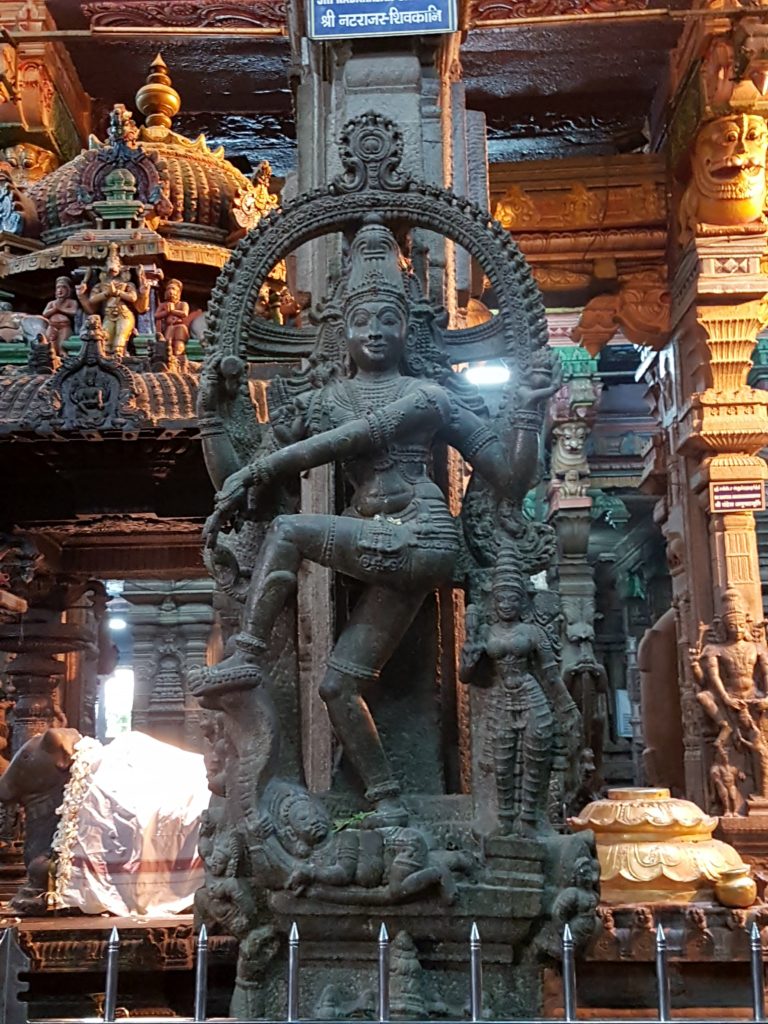India is the land of religious and cultural attractions, with the southern part of the country being home to some of the most famous temples in the world. One of these attractions is the renowned Meenakshi Temple in Tamil Nadu.

The temple adorns the town of Madurai, a place where the gatherings of Tamil poets was held. In the centre of the temple, there is a Lotus Pond, famous for its golden lotus structure.
In Tamil folklore, the pond was believed to be an evaluator for reviewing the worth of literature. Scholarly writings were tested here by immersing the scriptures in the pond. The meagre quality ones sank, and the worthy ones floated.

Meenakshi is certainly…MOST fascinating….in the Hindu CULTURE. According to some, Meenakshi may serve as an inspiration for young girls and women. The story of this goddess shows that females need not be bound by gender norms. Instead, they, like the goddess, may aspire to take on roles associated traditionally with males, and even excel in such roles.
The main icon of Meenakshi in the temple holds a parrot, a symbol of Kama, god of love. She also has a small dagger on her waist band, reminding everyone who the overlord is. On the temple wall, there is the image of her marriage.

Here, it is important to note that it is she who receives the groom’s hand, as against a conventional wedding where the groom receives the bride’s hand.There are many such fables of honourable and dignified status realized by Hindu women in historical and cultural excerpts of India, where women had the right to choose their partners. There was no desperation, no age limits…worthiness and suitability ware all that mattered.
As a ritual, every night, the image of Shiva is taken to the chambers of the queen, Meenakshi. There is an environment of celebrations when the procession entails music, flowers, essence, swings, mirrors on the wall…
It bears a semblance to the restorative stimulant required by the people reuniting after a long and strenuous day of work, in their private space.The aesthetically rich and extensive rituals convey the importance of sensory appeal for a bond to develop, the spark to rekindle and the body to rejuvenate.

Having spent the entire day taking care of her kingdom, Meenakshi spends all night adoring her beloved. This reinforces the value placed in Hindu traditions of the householder over the hermit.Householders’ life encompasses hard work, struggle, decisions, compromises, emotions, anxieties, kindness, and love.As they say in Buddhism, ‘earthly desires are enlightenment’. Life of a householder makes him a people’s person, there is no scope of short cuts or abandonment.

The Sundareswarar shrine where Lord Shiva is believed to have performed the cosmic dance, has a silver Nataraja situated.
The legend says that once Shiva and Parvathi had a dance challenge, and while dancing Shiva’s earrings fell on the ground. He did not stop dancing,instead lifted the earring with his toes and put it on performing the ‘Oordhvatandava’ step.
He swung his leg in 180 degrees posture which is normally not possible for women to perform. Hence, Parvathi was annoyed and took up her ‘Chandikeshwari’ form. In order to soothe her seething anger, the devotees light lamps in front of her and seek her blessings.

In my opinion, while lighting lamps could be a gesture of appeasing the goddess, a symbol that generates from the fear of a lash out, it could also be an effort to accept and work upon one’s limitations and ego. Hindu Gods and Goddesses do not convey righteousness. They make mistakes, they get angry, they love to eat (eat a lot of rich food)…The followers are given the privilege to understand the situation, analyse, and draw inspiration and learning from there.

The temple is lined with gigantic images of gods and goddesses, all kinds of mythical beasts and common people too like warriors, dancers, musicians, performers and tribals.
One such image that catches the eye is that of an effeminate man and a woman sporting a beard (a cross-dresser). It reveals India’s rich, liberal, and artistic culture. India did not require Section 377 to understand that love manifests in a variety of ways. And as long as it was love, it was acceptable!
Monica (Managing Editor) is the quintessential researcher - she thrives on showcasing overlooked aspects that form the foundation blocks of people, places and issues. She is a social scientist by profession with masters in Economics and loves to travel.